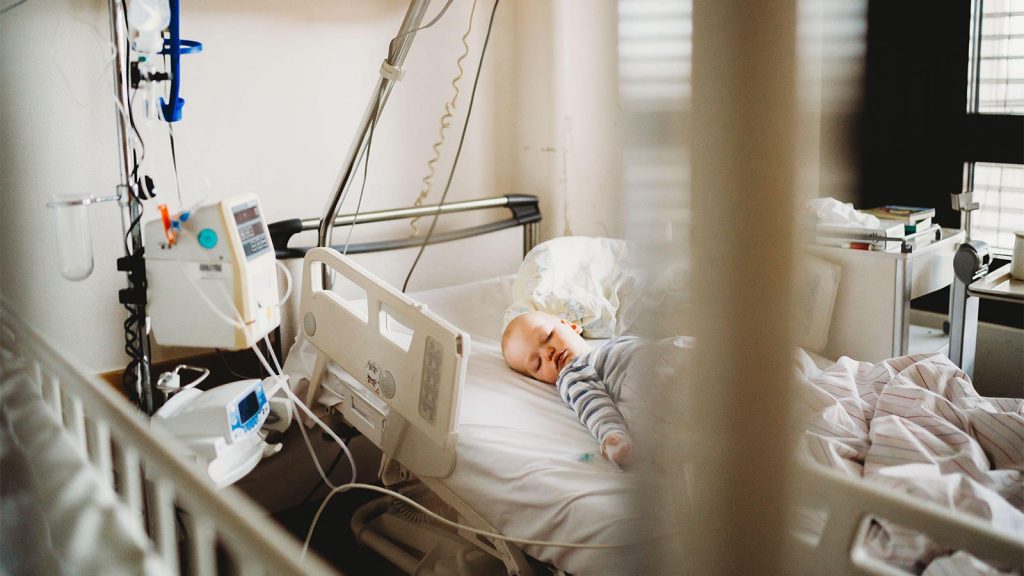
COVID-19 hospitalization rates among infants younger than 6 months jumped during the Omicron wave, outpacing hospitalizations during the earlier Delta wave, CDC researchers reported.
During the months when the Omicron BA.2/BA.5 subvariants were dominant, weekly hospitalizations per 100,000 infants younger than 6 months increased 11-fold (95% CI 4.3-33.3), rising from a low of 2.2 during the week ending April 9 to a peak of 26.0 during the week ending July 23 before then declining again, noted Sarah Hamid, PhD, of the CDC’s National Center for Immunization and Respiratory Diseases, and colleagues in the Morbidity and Mortality Weekly Report.
The average weekly hospitalization rate per 100,000 for this youngest demographic during the Omicron BA.2/BA.5-predominant periods — 13.7 — was higher than the rate of 8.3 during the Delta-dominant period (rate ratio RR 1.6, 95% CI 1.4-1.8), and was similar to rates among adults ages 65 to 74 (13.8), and higher than rates among all other age groups, except for adults ages 75 and older, which were far higher, at 39.4 per 100,000.
COVID-19 “can and does cause severe and fatal outcomes in children, including infants,” Hamid and team wrote. “To help protect infants too young to be vaccinated, prevention should focus on nonpharmaceutical interventions and vaccination of pregnant women, which might provide protection through transplacental transfer of antibodies.”
Curiously, the share of hospitalized infants with indicators of severe disease — such as longer hospital length of stay, intensive care unit admission, and need for respiratory support — were “consistently lower” during the Omicron BA.2/BA.5 periods compared with the Delta period, the authors noted.
Still, there is “continued risk for COVID-19-associated hospitalization among infants aged
Possible
